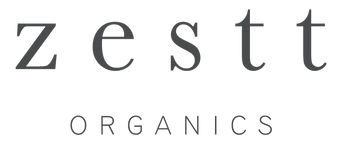We are committed to setting and upholding the strictest environmental, social and safety standards for our products and the families that use them. When we started zestt and began learning more about textile production, we were shocked to learn that many of the “soft” fabrics in our homes were just doused in chemical softeners or made from synthetic fibers that were bad for the environment. As moms ourselves, we understand the importance of creating a haven for your family that is safe and toxin free. Our team follows the standards set by the Global Organic Textile Standard and OEKO-Tex, which prohibit the use of more than 100 harmful chemicals used in traditional textile production. As part of our Do Better™ Promise, we’ve committed to ensuring that the following harmful chemicals used in traditional textile production don’t show up in our products.
Ammonia: Used as a setting agent in cotton textiles. Often used in the manufacture of man-made fibers. Causes skin and eye irritation.
PBDEs: Often used as fire retardants and found in children’s blankets and clothing. Shown to reduce fertility in humans at levels found in households.[1] Outlawed by the European Union and under the Stockholm Convention. Because they are not chemically bound to textile fibers, they are more likely to leach out of these products.[2]
Chlorophenols: Used as textile preservatives. Long term exposure shown they may result in the development of certain cancers.[3]
Chlorinated benzenes: Used most often in polyester fibers as leveling agents. Toxic for both inhalation and skin. Also prevalent in the wastewater of traditional textile
AZO dyes and pigments: Dyes made with a specific organic compound. Certain dyes are mutagenic and carcinogenic.[4]
Phthalates: Used as plasticizers to make fabrics more resilient and long wearing. Also found in a variety of home products from flooring to cosmetics. Classified as both environmental and biomedical pollutants and considered a potential endocrine disruptor. The EU has classified It often gives that “new plasticy” smell in new clothes, blankets or shoes.
Heavy Metals: Metallic elements that are considered toxic or poisonous at low concentrations (common offenders include lead, mercury, cadmium and antimony). Traditionally found in knitting/weaving oils. These elements can build up in internal organs, impacting the nervous system.
In addition, all inputs are prohibited in zestt organics products if they are classified with the codification of the Global Harmonized Sytem (GHS) as published by the United Nations, annex 3:
- H300 Fatal if swallowed
- H310 Fatal in contact with skin
- H330 Fatal if inhaled H340 May cause genetic defects
- H341 Suspected of causing genetic defects
- H350 May cause cancer
- H351 Suspected of causing cancer
- H360 May damage fertility or the unborn child
- H361 Suspected of damaging fertility or the unborn child
- H370 Causes damage to organs
- H371 May cause damage to organs
- H372 Causes damage to organs through prolonged or repeated exposure


